Table of Contents
Come join us now, and enjoy playing your beloved music and browse through great scores of every level and styles!
Can’t find the songbook you’re looking for? Please, email us at: sheetmusiclibrarypdf@gmail.com We’d like to help you!
Sorabji: In the Hothouse (from Two Piano Pieces) sheet music, Noten, partitura, spartiti 楽譜

Best Sheet Music download from our Library.

Please, subscribe to our Library.
If you are already a subscriber, please, check our NEW SCORES’ page every month for new sheet music. THANK YOU!
Browse in the Library:
Or browse in the categories menus & download the Library Catalog PDF:
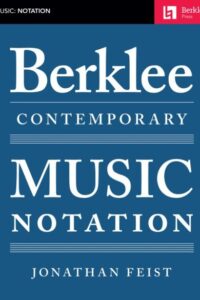
Who was Sorabji?
Kaikhosru Shapurji Sorabji: The Hermit of Modernist Maximalism
In the often-crowded pantheon of 20th-century composers, Kaikhosru Shapurji Sorabji (1892-1988) occupies a unique and enigmatic niche. A composer of staggering ambition, labyrinthine complexity, and self-imposed isolation, Sorabji crafted some of the most monumental, technically demanding, and stylistically idiosyncratic music ever conceived. His work, largely ignored during his lifetime and still challenging audiences today, represents a singular path through modernism – one defined by maximalism, intricate ornamentation, transcendental virtuosity, and a fierce, almost hermetic, independence.

Biography: A Self-Forged Identity
- Birth & Heritage: Born Leon Dudley Sorabji on August 14, 1892, in Chingford, Essex, England. His father was a Parsi engineer from India (thus the Persian-derived name Sorabji), and his mother was English-Spanish. This mixed heritage profoundly shaped his sense of identity, though he felt alienated from both cultures.
- The Name: Around 1914, he legally changed his name to Kaikhosru Shapurji Sorabji. “Kaikhosru” and “Shapurji” were Persian names chosen for their resonance and connection to ancient Persian history and Zoroastrianism, reflecting his deliberate construction of a unique persona.
- Musical Formation: Largely self-taught. He received some piano lessons in his youth but had no formal composition training. His musical education came through voracious listening, score study (especially Bach, Liszt, Busoni, Debussy, Ravel, Scriabin, Szymanowski, Medtner), and wide reading in literature, philosophy, and the occult.
- Early Career & Criticism: Worked as a music critic (under the pseudonym “S. Godfrey”) for outlets like The New Age and The New English Weekly from the 1910s to the 1930s. His critiques were famously acerbic, insightful, and often scathing, particularly targeting English musical provincialism and composers he deemed mediocre (which was most of them).
- The Recluse: Deeply disillusioned by the musical establishment and critical reception to his early performances (which were rare and often controversial), Sorabji gradually withdrew from public musical life starting in the late 1930s. After his mother’s death in 1940, he retreated almost completely to his secluded home “The Eye” in Corfe Castle, Dorset, where he lived with his companion, Reginald Norman Best, until his death. He forbade performances of his music for decades.
- The Ban Lifted: In 1976, pressured by a growing underground interest spearheaded by pianists like Yonty Solomon and Alistair Hinton (who later became his literary executor), Sorabji reluctantly lifted the ban on performances, provided he approved the performer.
- Death: Sorabji died on October 15, 1988, in Winfrith Newburgh, Dorset, leaving behind a colossal legacy of unpublished manuscripts.
Works: Monuments of Sound

Sorabji’s output is vast and overwhelmingly dominated by solo piano music, though he also composed orchestral works, chamber music, organ symphonies, and songs. His works are renowned for their extreme length, density, and technical difficulty, pushing the boundaries of playability.
- Key Masterpieces:
- Opus Clavicembalisticum (1930): His most famous (or infamous) work. A colossal 4+ hour piano epic in 12 movements (including fugues, passacaglias, toccatas, cadenzas), often considered one of the most challenging solo piano works ever written. A summit of contrapuntal complexity and virtuosic display.
- Symphonic Variations for Piano (1935-37): Another monumental work, exploring vast variation forms over an extended duration.
- Sequentia Cyclica super “Dies iræ” ex Missa pro Defunctis (1948-49): A massive cycle of 27 variations on the “Dies Irae” chant, demonstrating his intricate contrapuntal and transformative skills.
- 100 Transcendental Studies (1940-44): True to their name, these studies explore extreme technical and expressive demands far beyond those of Liszt or Chopin.
- Symphonies for Solo Piano: Several exist, including his Symphony No. 2 (“Jāmī”), blending orchestral textures and scope onto the piano.
- Gulistān – Nocturne for Piano (1940): A prime example of his lush, perfumed, and incredibly intricate “Persian”-inspired style.
- Concerti: He wrote several for solo piano and orchestra (e.g., Concerto per suonare da me solo e senza orchestra, per divertirsi), which are symphonic in scale and require superhuman virtuosity.
- Symphonies for Organ: Vast, complex works exploring the sonic possibilities of the instrument.
Analysis of Style: A Universe of Complexity
Sorabji’s style is instantly recognizable yet difficult to categorize. It synthesizes diverse elements into a unique and overwhelming whole:
- Maximalism: This is the defining characteristic. Sorabji embraced extremes:
- Length: Works lasting several hours are common.
- Density: Highly polyphonic textures, often with multiple independent melodic lines woven together in complex counterpoint (influenced by Bach, Busoni).
- Virtuosity: Demands transcendental technique – cascades of notes, complex polyrhythms, wide leaps, immense power, and extreme delicacy. He wrote as if the pianist had four hands.
- Ornamentation: Baroque-like ornamentation (trills, mordents, turns, grace notes) is ubiquitous, often layered and integral to the texture, creating shimmering, kaleidoscopic surfaces (influenced by Scriabin, Szymanowski, Middle Eastern/Persian music).
- Dynamic Range: From barely audible whispers to thunderous, percussive climaxes.
- Harmony: A complex fusion:
- Rooted in late-Romantic chromaticism (Scriabin, Szymanowski, early Schoenberg).
- Freely employed dissonance, clusters, and intricate chord structures.
- Often retained a sense of tonal centers or polarity, even amidst dense chromaticism (unlike strict atonality).
- Incorporated modal inflections, sometimes evoking Persian or Spanish flavors.
- Rhythm: Highly complex and fluid:
- Frequent use of polyrhythms (multiple simultaneous rhythms), cross-rhythms, and nested tuplets (triplets within quintuplets, etc.).
- Tempo often fluctuates wildly, requiring immense control.
- A sense of improvisatory freedom within highly structured forms.
- Form: Often large-scale, complex, and idiosyncratic:
- Favored variations (passacaglias, chaconnes), fugues, toccatas, and intricate multi-movement structures (like the Opus Clavicembalisticum).
- Forms were often expansive and cumulative, building through layered repetition and intensification rather than traditional development.
- Architecture was paramount, even in the densest textures.
- Influences (Assimilated, Not Imitated):
- Ferruccio Busoni: The most profound influence. Busoni’s ideas of “Young Classicism,” the transcendental potential of the piano, the fusion of Bachian counterpoint with modern harmony, and the concept of “Junge Klassizität” resonated deeply. Sorabji dedicated his Opus Clavicembalisticum to Busoni’s memory.
- Franz Liszt: Virtuosity, thematic transformation, large-scale forms, and the symphonic poem concept translated to piano.
- J.S. Bach: Contrapuntal mastery, structural rigor, and the use of forms like fugue and passacaglia.
- Alexander Scriabin: Mysticism, harmonic language, dense textures, and ecstatic climaxes.
- Karol Szymanowski: Sensuous harmony, intricate ornamentation (especially in the “Persian” inspired works like Métopes and Masques), and voluptuous textures.
- Debussy & Ravel: Color, texture, exoticism, and pianistic refinement.
- Mediterranean & Persian Cultures: While not authentically recreating these styles, he evoked their essence through ornamentation, melodic turns, and titles (Gulistān, Jāmī), reflecting his fascination with his Persian heritage and the wider Orient.
- Aesthetic: Sorabji’s music aimed for:
- Transcendence: Pushing beyond perceived limits of instrument, performer, and listener.
- Luxuriance & Opulence: A rich, sensual, almost decadent sound world.
- Intellectual Rigor: Underlying the sensual surface was meticulous structural planning.
- Individualism: A complete rejection of prevailing trends (serialism, neoclassicism, minimalism) in favor of his own uncompromising vision.
Legacy: From Obscurity to Cult Status
Sorabji’s legacy is complex and evolving:
- Decades of Neglect: His self-imposed exile and performance ban meant his music was virtually unknown outside a tiny circle for nearly 40 years. Manuscripts were inaccessible, unplayable, and unpublished.
- The Pioneers (1970s-): The lifting of the ban sparked interest. Pianists like Yonty Solomon, Michael Habermann, Geoffrey Douglas Madge (who made the first complete recording of Opus Clavicembalisticum in 1977), and later Marc-André Hamelin, Jonathan Powell, Fredrik Ullén, and Ronald Stevenson began the monumental task of learning, performing, and recording his works. This required immense dedication and technical prowess.
- Publication & Scholarship: The Sorabji Archive, established by Alistair Hinton (Sorabji’s literary executor), has been crucial in cataloging, editing, and facilitating the publication of scores (primarily by Dover Publications and The Sorabji Music Archive). Scholarly work is gradually increasing.
- Recordings Renaissance: The CD era and digital distribution (YouTube, streaming) have been transformative. Dedicated labels (Altarus, BIS, Toccata Classics, Piano Classics) have released numerous recordings, making this once-inaccessible music available globally. Complete cycles of the 100 Studies and other major works are underway.
- The Cult & The Challenge: Sorabji remains a “composer’s composer” and a cult figure. His music is not mainstream concert fare due to its extreme demands and duration. However, it commands deep respect and fascination among pianists, composers, and listeners drawn to its unique sound world and uncompromising vision. He is seen as the ultimate iconoclast, forging a path utterly independent of 20th-century musical fashions.
- Influence: His direct influence on other composers is hard to pinpoint due to his obscurity, but he stands as a powerful symbol of uncompromising artistic integrity and the exploration of extreme complexity and virtuosity. Composers interested in maximalism, intricate counterpoint, or pushing pianistic limits inevitably encounter his shadow.
- Copyright Controversy: The complex copyright status of his works (involving the Sorabji Archive and publishers) has sometimes been a point of friction within the community of performers and scholars seeking access.
Sorabji: The Solitary Giant
Kaikhosru Shapurji Sorabji was a true original. He inhabited a musical universe entirely of his own making, synthesizing diverse influences into a style characterized by unparalleled complexity, sensuous opulence, and transcendental ambition. His deliberate withdrawal from the world ensured decades of obscurity, but the dedication of pioneering performers and the power of recording technology have brought his extraordinary soundscapes to light. While his music remains challenging and demanding, it offers unparalleled rewards: a journey into a world of labyrinthine beauty, overwhelming power, and intellectual fascination. Sorabji stands as a testament to the power of an utterly individual artistic vision, uncompromising in its scope and ambition, a solitary giant whose monumental creations continue to challenge and inspire. He redefined the possible for the piano and left a legacy that continues to unfold as more performers dare to scale his musical Himalayas.
“In the Hothouse” is one of Sorabji’s most evocative and frequently performed works, serving as a perfect entry point into his dense, sensuous sound world. Here’s a detailed look at this fascinating piece:
Context: Two Piano Pieces (1918)
- Composed: 1918 (early in Sorabji’s career, age 26).
- Publication: First published in 1920, making it one of the earliest Sorabji works available in print.
- The Pair: “In the Hothouse” is paired with “Toccata” – a contrasting, hyper-virtuosic, and structurally complex piece showing his Busoni/Liszt influences. “In the Hothouse” offers the sensual, atmospheric counterpoint.
- Significance: Represents Sorabji’s early mastery of texture, harmony, and evocative atmosphere. It predates his gargantuan works but already displays his unique voice.
“In the Hothouse”: A Sensory Immersion
- Title & Imagery: The title instantly conjures an environment: humid, lush, teeming with exotic, overripe plant life, heavy perfumes, and stifling, enclosed heat. Sorabji translates this sensory overload into sound.
- Form & Structure: Relatively free and rhapsodic. It unfolds as a continuous, organic stream of consciousness rather than adhering to strict classical forms. Think of it as an elaborate, decadent arabesque.
- Style & Character:
- Extreme Sensuality: This is the defining feature. The music drips with lush, complex harmonies and suffocatingly rich textures.
- Harmony: Deeply chromatic, rooted in late Scriabin and early Szymanowski. Expect dense, constantly shifting chords: augmented harmonies, whole-tone inflections, unresolved dissonances creating tension, and sudden moments of surprising consonance like shafts of light piercing foliage. It avoids traditional tonality but gravitates around implied centers.
- Texture: Thick, layered, and constantly in motion. Tremolos, trills, rapid filigree (ornamental passages), and cascading arpeggios create a shimmering, humid haze. Melodies are often embedded within this dense undergrowth rather than standing clearly apart. The writing often requires the pianist to sustain multiple layers simultaneously.
- Rhythm: Fluid and flexible, often obscured by the sheer density of notes and ornamentation. Rubato (expressive tempo fluctuations) is essential. While less overtly complex polyrhythmically than his later works, the rhythmic flow feels organic and improvisatory.
- Dynamics & Articulation: Wide dynamic range, often shifting suddenly between extremes (e.g., thunderous climaxes collapsing into fragile whispers). Articulation varies from sharp staccatos to legatissimo passages that blur together. Pedaling is crucial for sustaining the harmonic haze and creating resonance.
- Ornamentation: Quintessential early Sorabji. Trills, mordents, turns, and grace notes are not mere decoration; they are the texture, creating constant flickering movement and contributing to the claustrophobic, teeming atmosphere. This foreshadows the intricate ornamentation dominating his mature style.
- Emotional Landscape: Evokes opulence, decadence, languor, mystery, stifling heat, hidden dangers, and overwhelming sensory stimulation. There’s a sense of beauty bordering on the grotesque due to its sheer intensity.
Influences Audible in “In the Hothouse”
- Scriabin (Primary): The harmonic language (mystic chords, unresolved dissonance, ecstatic climaxes), the sensual atmosphere, and the use of trills/tremolos are deeply indebted to Scriabin’s late sonatas and poems (e.g., Vers la flamme). Sorabji pushes Scriabin’s decadence further.
- Szymanowski: The opulent textures, perfumed harmonies, and “orientalist” exoticism (though abstracted here) strongly recall Szymanowski’s “Métopes” or “Masques,” which Sorabji admired deeply.
- Debussy: The focus on atmosphere, texture, and harmonic color (whole-tone scales, parallel chords) shows Debussy’s influence, though rendered with far greater density and intensity.
- Ravel: The virtuosic filigree and lush harmonies (think “Gaspard de la Nuit,” especially “Ondine” or “Le gibet”) are a touchstone, again amplified.
- Liszt: The rhapsodic freedom and dramatic gestures hint at Liszt, though filtered through a post-Scriabinesque lens.
Performance Challenges
- Texture & Balance: Maintaining clarity amidst the dense, rapidly shifting textures is paramount. The pianist must carefully voice chords and layers to prevent muddiness while sustaining the essential harmonic haze.
- Ornamentation as Texture: Executing the constant ornamentation smoothly and evenly, integrating it into the melodic and harmonic flow rather than treating it as mere decoration.
- Dynamic Control: Navigating the extreme dynamic contrasts and sudden shifts without sounding jarring. Creating a true pianissimo shimmer within complexity is incredibly difficult.
- Rubato & Phrasing: Applying expressive tempo fluctuations naturally while maintaining the overall structural coherence and forward momentum of the rhapsodic form.
- Pedaling: Using the pedal to create resonance and blend without causing harmonic blurring or loss of rhythmic definition. Requires exceptional sensitivity.
- Stamina & Focus: While shorter than his later works (typically 12-15 minutes), the piece demands intense concentration and physical control to sustain the atmosphere and navigate the technical intricacies.
Legacy & Significance of “In the Hothouse”
- Accessibility: It remains one of Sorabji’s most “accessible” works due to its evocative title, relatively shorter duration, and concentrated expression. It’s a frequent choice for pianists introducing audiences to Sorabji.
- Blueprint: It serves as a crucial blueprint for Sorabji’s mature style, showcasing his core preoccupations: sensuality, harmonic density, intricate ornamentation as texture, and atmospheric evocation, all present in embryonic form.
- Performance History: Despite Sorabji’s later ban, “In the Hothouse” (along with the Toccata) was one of the few pieces occasionally performed during his lifetime (e.g., by Sorabji himself and pianist Reginald Paul) and became a key work for the pioneering generation post-1976 (Yonty Solomon, Michael Habermann, Marc-André Hamelin, Jonathan Powell, Fredrik Ullén).
- Gateway Piece: It functions as a vital “gateway drug” into Sorabji’s world. Its success in conveying its intense atmosphere often encourages listeners to explore his more monumental, complex works.
- Standalone Masterpiece: Regardless of its role as an introduction, it stands as a perfectly formed and powerful piece of early modernist piano writing, a miniature tone poem of extraordinary evocative power.
“In the Hothouse” is a sun-drenched, overripe, and intoxicating immersion into Sorabji’s unique aesthetic. It captures the essence of his sensual maximalism in a concentrated dose, showcasing his debt to Scriabin and Szymanowski while asserting his own distinct voice. Its evocative power, technical brilliance, and relative brevity ensure its enduring place as one of his most beloved and frequently performed works, offering a compelling glimpse into the hothouse of Sorabji’s extraordinary musical imagination.
| Artist or Composer / Score name | Cover | List of Contents |
|---|---|---|
| Mariah Carey – Always Be My Baby | ||
| Mariah Carey – Anytime You Need A Friend | ||
| Mariah Carey – Hero | ||
| Mariah Carey – Love Takes Time | ||
| Mariah Carey – One Sweet Day | ||
| Mariah Carey – Through The Rain | ||
| Mariah Carey – Without You | ||
| Mariah Carey 1s Piano Vocal guitar |
 |
Mariah Carey 1s Piano Vocal guitar contents |
| Mariah Carey Anthology Piano Vocal Guitar |
 |
Mariah Carey Anthology Piano Vocal Guitar |
| Mariah Carey Emotions Songbook |
 |

 |
| Mariah Carey Mariah Carey Songbook Piano Vocal guitar songbook |
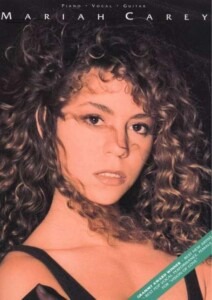 |
Mariah Carey Mariah Carey Songbook Piano Vocal guitar contents |
| Mariah Carey Merry Christmas |
 |
Mariah Carey Merry Christmas |
| Mariah Carey The Ballads Piano Vocal Guitar |
 |
Mariah Carey The Ballads Piano Vocal Guitar |
| Marilyn Manson Holy Wood |
 |
Marilyn Manson Holy Wood |
| Marilyn Monroe Songbook |
 |
Marilyn Monroe – Songbook (39pp) |
| Mark Fowler Interstellar Piano Suite |
 |
|
| Mark Harrison – Contemporary Jazz Piano |
 |
Contemporary Jazz Piano |
| Mark Harrison – Intro to Jazz Piano |
 |
|
| Mark Harrison – Smooth Jazz piano (PDF + MP3 audio tracks) |
 |
Mark Harrison.-Smooth Jazz Piano |
| Mark Harrison Beginning Rock Keyboard (PDF + MP3 audio tracks) |
 |
Mark Harrison – Beginning Rock Keyboard Contents |
| Mark Harrison Blues Piano (PDF + MP3 audio tracks) |
 |
Mark Harrison – Blues Piano Contents |
| Mark Harrison Contemporary Music Theory Level One A Complete Harmony And Theory Method For The Pop And Jazz Musician |
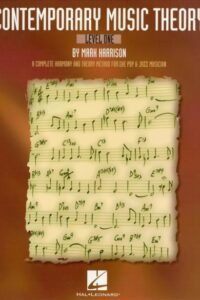 |
|
| Mark Harrison Country Piano (PDF + MP3 audio tracks) The Complete Guide Keyboard Style series |
 |
Mark Harrison – Country Piano Contents |
| Mark Harrison Funk Keyboard For Beginners |
 |
|
| Mark Harrison Jazz Blues Piano (PDF + MP3 audio tracks) |
 |
Mark Harrison – Jazz-Blues Piano Contents |
| Mark Harrison R&B Keyboard (complete guide with audio MP3) Rhythm and blues R’n’B |
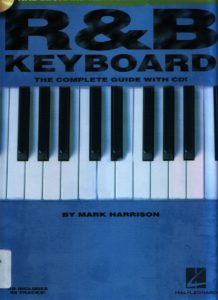 |
Mark Harrison – R&B Keyboard |
| Mark Hayes Hymn Settings That Touch The Soul |
 |
Mark Hayes Hymns That Touch The Soul |
| Mark Hayes The Best Of |
 |
Mark Hayes The Best Of |
| Mark Isham – When Things Dream |
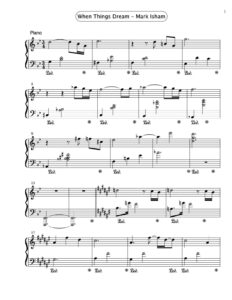 |
|
| Mark Isham Building A Family |
 |
|
| Mark Isham The Evil Queen Theme |
 |
|
| Mark Knopfler – Telegraph Road (piano & vocal sheet music) |
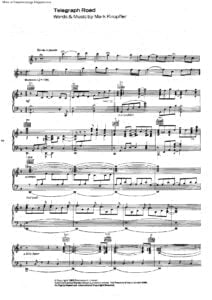 |
|
| Mark Knopfler Get Lucky Songbook (Guitar with Tablature) |
 |
Mark Knopfler Get Lucky Guitar TABs —  |
| Mark Knopfler Guitar Styles with Tablature |
 |
Mark Knopfler Guitar Styles |
| Mark Knopfler Kill To Get Crimson Guitar TABs |
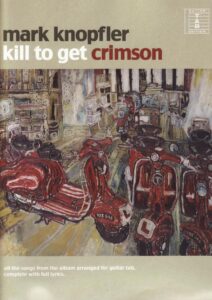 |
Mark Knopfler Kill To Get Crimson Guitar TABs |
| Mark Levine El libro del Jazz Piano The Jazz piano book Spanish Español |
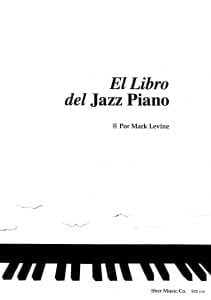 |
El libro del Jazz Piano |
| Mark Levine – The Drop 2 Book – Jazz Piano Masterclass (with audio MP3) |
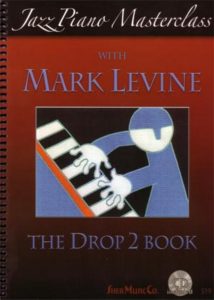 |
|
| Mark Levine -The Jazz Theory Book (with audio MP3) |
 |
|
| Mark Levine Teoria Del Jazz |
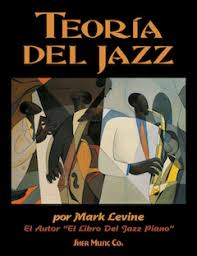 |
|
| Mark Levine The Jazz Piano Book |
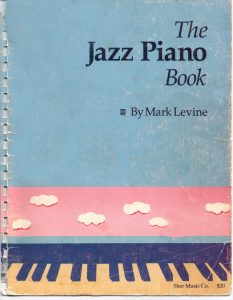 |
jazz piano book |
| Mark Lowry – Marry Did You Know | ||
| Mark Nevin Manhattan Blues Piano Solo Vintage Sheet Music 1962 |
 |
|
| Mark Yong – Guitar In Concert |
 |
Mark Yong – Guitar In Concert |
| Marlene Dietrich The Songbook |
 |
Marlene Dietrich The Songbook |
| Maroon 5 Don’t Wanna Know (Feat. Kendrick Lamar) | Maroon 5 Don’t Wanna Know (Feat. Kendrick Lamar) | |
| Maroon 5 – Secret | ||
| Maroon 5 Animals Piano Vocal guitar |
 |
|
| Maroon 5 Hands All Over |
 |
Maroon 5 Hands All Over |
| Maroon 5 It Wont Be Soon Before Long Piano Vocal guitar songbook |
 |
Maroon 5 It Wont Be Soon Before Long Piano Vocal guitar songbook |
| Maroon 5 Overexposed |
 |
Maroon 5 Overexposed |
| Maroon 5 Red Pill Blues Piano Vocal guitar songbook |
 |
Maroon 5 Red Pill Blues Piano Vocal guitar songbook |
| Maroon 5 Songs About Jane Piano Vocal guitar songbook |
 |
Maroon 5 Songs About Jane Piano Vocal guitar songbook |
| Maroon 5 This Love |
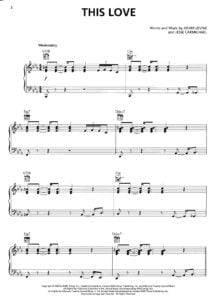 |
|
| Maroon 5 This Summers Gonna Hurt Like A … Piano Vocal guitar songbook |
 |
|
| Maroon 5 V |
 |
Maroon 5 – V |
| Maroon5 – Girls Like You Sheet Music |
 |
|
| Maroon5 – She Will Be Loved | ||
| Maroon5 – This Love | ||
| Married With Children – Love And Marriage | ||
| Marshmello – Happier Sheet Music Bastille Piano Vocal Guitar Chords |
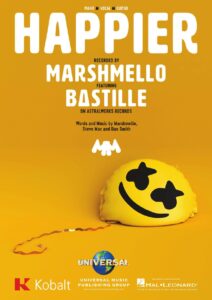 |
|
| Martan Mann Jazz Improvisation For The Classical Pianist |
 |
|
| Martha Mier Jazz Rags And Blues Vol. 4 |
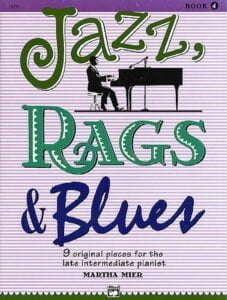 |
|
| Martha Mier Jazz Rags And Blues Vol. 5 |
 |
|
| Martha Mier Jazz Rags & Blues for two book 2 (Duet Book) |
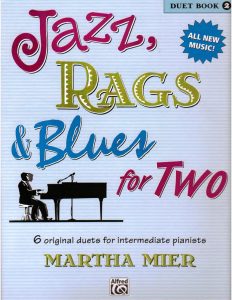 |
|
| Martha Mier – Jazz Rags & Blues – Vol. 2 |
 |
|
| Martha Mier – Jazz Rags & Blues – Vol. 3 |
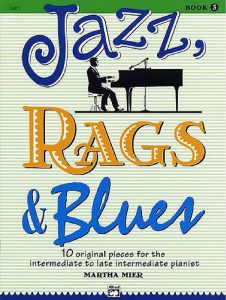 |
|
| Martha Mier – Jazz Rags and Blues – Vol. 1 |
 |
|
| Martha Mier – Reflections 7 Elementary Piano Solos In Romantic Style Book 1 |
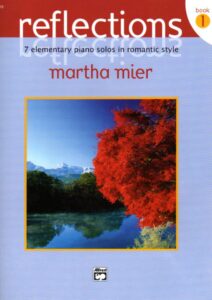 |
Martha Mier – Reflections 7 Elementary Piano Solos In Romantic Style Book 1 |
| Martha Mier – Romantic Sketches |
 |
|
| Martha Mier – Romantic Sketches Book 2 |
 |
|
| Martha Mier – Twilight Musings | Martha Mier – Twilight Musings | |
| Martha Mier – Worrisome Blues Jazz Rags and blues.mscz | ||
| Martha Mier Bravo Book One (Piano Solos) |
 |
|
| Martha Mier Bravo Book Two (Piano Solos) |
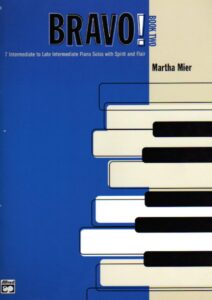 |
|
| Martha Mier Favorite Solos Book 2 (Piano Solos) |
 |
Martha Mier Favorite Solos Book 2 (Piano Solos) |
| Martha Mier Florida Reflections (Intermediate) |
 |
|
| Martha Mier Jazz Rags & Blues Christmas – Book 1 |
 |
|
| Martha Mier Jazz Rags And Blues For Two Duet Book 1 |
 |
|
| Martha Mier Jazz Rags And Blues For Two Duet Book 4 |
 |
|
| Martha Mier Romantic Impressions Book 1 |
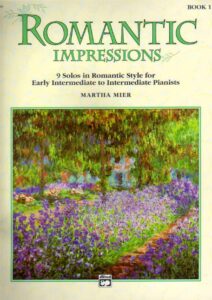 |
Martha Mier Romantic Impressions Book 1 |
| Martha Mier Romantic Impressions Book 3 |
 |
Martha Mier The Best Of Book 3 (Piano Solos) |
| Martha Mier The Best Of Book 3 (Piano Solos) |
 |
Martha Mier The Best Of Book 3 (Piano Solos) |
| Martial Solal – Happy Birthday piano solo transcription sheet music | Martial Solal Birthday piano solo transcription sheet music | |
| Martial Solal Aigue Marine |
 |
|
| Martial Solal Jazz Frit (piano solo transcription sheet music, partition) |
 |
|
| Martial Solal Navigation (piano solo transcription sheet music, partition) |
 |
|
| Martial Solal On Green Dolphin Street (piano solo transcription sheet music, partition) |
 |
|
| Martial Solal – Jazz Preludes |
 |
Martial Solal – Jazz Preludes |
| Martial Solal – Methode d’improvisation jazz piano (text Français – French) |
 |
Martial Solal – Methode d’improvisation jazz piano (text Français – French) |
| Martial Solal – Nuages (Clouds) – Piano Transcription sheet music | Martial Solal – Nuages (Clouds) – Piano Transcription sheet music | |
| Martial Solal Centre De Gravite (piano solo transcription sheet music, partition) |
 |
|
| Martial Solal Impromptulm (piano solo transcription sheet music, partition) |
 |
|
| Martial Solal Que Reste T Il De Nos Amours I Wish You Love |
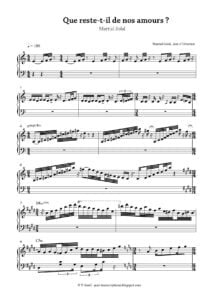 |
|
| Martin Cuellar – Toccata (Late Intermediate Piano) |
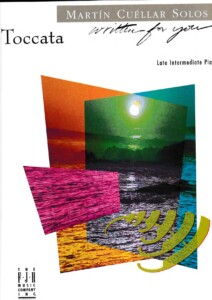 |
|
| Martin Cuellar Toccata Late Intermediate Piano |
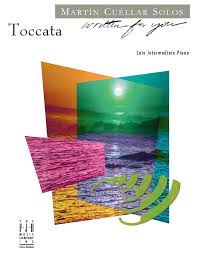 |
|
| Martin Taylor – Jazz Guitar Licks Phrasebook Book + Embedded Audio Mp3 Tracks To Play Along |
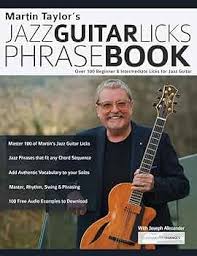 |
|
| Martini Dry (La Valise OST) Philippe Sarde | ||
| Martinu Fantasy Toccata | Martinu Fantasy et Toccata | |
| Martinu Piano Sonata 1 |
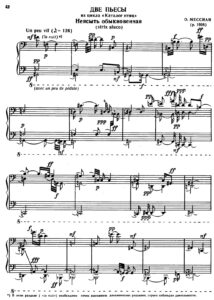 |
|
| Martinu Scherzo For Piano |
 |
|
| Marty Robbins The Streets Of Laredo Traditional (easy) | Marty Robbins The Streets Of Laredo Traditional | |
| Marvel Vs Street Fighter – Wolverine | ||
| Marvin Gaye – Aint No Mountain High Enough | ||
| Marvin Gaye – Greatest Hits |
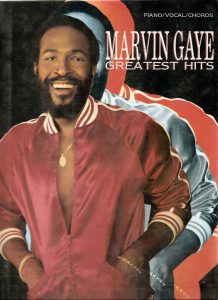 |
Marvin Gaye – Greatest Hits |
| Marvin Hamlisch Songbook |
 |
Hamlisch Marvin Songbook |
| Marvin Hamlisch Songbook Piano Vocal Guitar |
 |
Marvin Hamlisch Songbook Piano Vocal Guitar |
| Mary Leaf Softly Falling Snow Piano Solo |
 |
|
| Mary Leaf Night Flight Intermediate Piano |
 |
|
| Mary Leaf Softly Falling Snow Intermediate Piano |
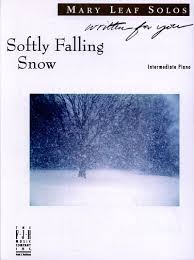 |
|
| Mary Lou Williams The Man I Love (G. Gershwin) Piano Transcription Sheet Music | Mary Lou Williams The Man I Love (G. Gershwin) Piano Transcription Sheet Music | |
| Mary Lou Williams – Mary’s Special (piano solo transcription sheet music, partition) | Mary Lou Williams – Mary’s Special (piano solo transcription sheet music, partition) | |
| Mary Lou Williams – Chili Sauce (piano solo sheet music transcription) |
 |
|
| Mary Lou Williams – Chili Sauce (Piano Solo Sheet Music Transcription) (Musescore File).mscz | ||
| Mary Lou Williams – Fifth dimension (piano solo transcription sheet music, partition) |
 |
|
| Mary Lou Williams – Zodiac Suite (1945) piano solo transcription sheet music |
 |
|
| Mary Lou Williams 6 Original Boogie Piano Solos |
 |
Mary Lou Williams 6 Original Boogie Piano Solos |
| Mary Lou Williams Best Of Sheet Music Transcriptions |
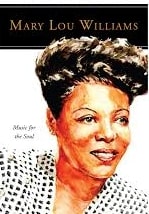 |
Mary Lou Williams Best Of Sheet Music Transcriptions |
| Mary Lou Williams Blues for Peter Transcription | Mary Lou Williams Blues for Peter Transcription | |
| Mary Lou Williams Hesitation Boogie Transcription | Mary Lou Williams Hesitation Boogie Transcription | |
| Mary Lou Williams JBs Waltz Transcription | Mary Lou Williams JBs Waltz Transcription | |
| Mary Lou Williams Marys Special Piano Solo Transcription Sheet Music Partition |
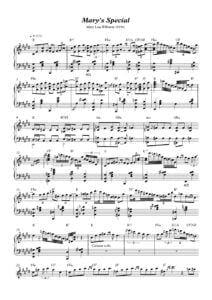 |
|
| Mary Lou Williams No Title Blues Transcription | Mary Lou Williams No Title Blues Transcription | |
| Mary Lou Williams Rosa Mae Transcription | Mary Lou Williams Rosa Mae Transcription | |
| Mary Poppins (The Broadway Musical) Piano Vocal score Richard and Robert Sherman |
 |
Mary Poppins (The Broadway Musical) Piano Vocal score Richard and Robert Sherman |
| Mary Poppins Broadway Score (Piano & Vocal) |
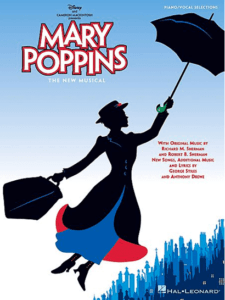 |
Mary Poppins Broadway Score (Piano & Vocal) |
| Mary Poppins Overture – Piano Duet | Mary Poppins Overture – Piano Duet | |
| Mary Poppins The Broadway Musical Piano Vocal Selections |
 |
Mary Poppins The Broadway Musical Piano Vocal Selections |
| Mary Poppins The New Musical Easy Piano Vocal Chords |
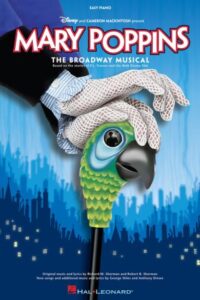 |
Mary Poppins The New Musical Easy Piano Vocal Guitar Chords |
| Mary Rodgers The Boy From from The Mad Show |
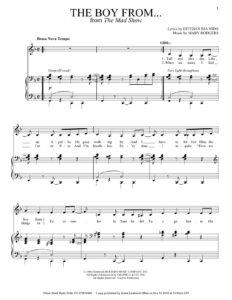 |
|
| Mascagni – Intermezzo – Cavalleria Rusticana (Piano Solo) | Mascagni – Intermezzo – Cavalleria Rusticana (Piano Solo) | |
| Mascagni Cavalleria Rusticana – Intermezzo Transcription Piano solo | Mascagni Intermezzo | |
| Massenet Méditation De Thaïs (Piano Solo Arr.) (Musescore File).mscz | ||
| Massenet Meditation from Thais (Piano Transcription) |
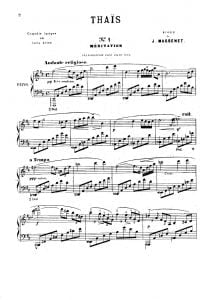 |
|
| Massenet, Méditation de Thaïs (piano solo arr.) | Massenet, Méditation de Thaïs (piano solo arr.) | |
| Massive Attack – Teardrop | ||
| Mastering Chord Melody – The Complete Jazz Guitar Method by Jody Fisher (with MP3 audio tracks and Tablature) |
 |
Mastering I Beginning Jazz Guitar The Complete Jazz Guitar Method by Jody Fisher (with audio MP3) |
| Mastering Improvisation – The Complete Jazz Guitar Method by Jody Fisher (with audio MP3 audio tracks and Tablature) |
 |
Mastering II Beginning Jazz Guitar The Complete Jazz Guitar Method by Jody Fisher (with audio MP3) |
| Masterpieces of piano music, by Albert E. Wier (1918) | Masterpieces of piano music | Masterpieces Of Piano Music (1918)-contents |
| Masterpieces Of Western Music Course Guide Modern Scholar (Book) |
 |
|
| Masters Of Rhythm Guitar By Joachim Vogel |
 |
Masters Of Rhythm Guitar By Joachim Vogel |
| Masters Of Rock Guitar The Peter Fischer |
 |
Masters Of Rock Guitar The Peter Fischer |
| Masters Of The Plectrum Guitar Mel Bay |
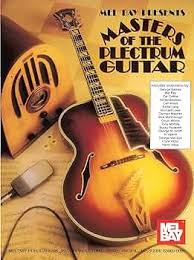 |
Masters Of The Plectrum Guitar Mel Bay |
| Matchbox20 – 3 Am | ||
| Matchbox20 – Unwell | ||
| Materia Primoris The X-Files Theme (Main Title) Piano Solo Arr. By Mark Snow (Musescore File).mscz | ||
| Matilda The Musical (Roald Dahls ) Music From The Netflix Film Piano Vocal Guitar |
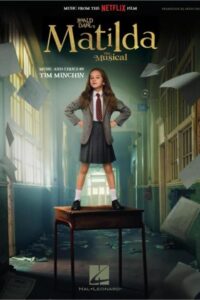 |
Matilda The Musical (Roald Dahls ) Music From The Netflix Film Piano Vocal Guitar |
| MATRIX Songbook Selections Piano Vocal Chord |
 |
MATRIX Songbook Selections Piano Vocal Chord |
| Matt Christensen – Good Times – Superliminal (Original Game Soundtrack) |
 |
|
| Matt Christensen – Hopeful – Superliminal (Original Game Soundtrack) |
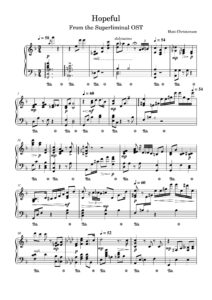 |
|
| Matt Christensen – Wonder – Superliminal (Original Game Soundtrack) |
 |
